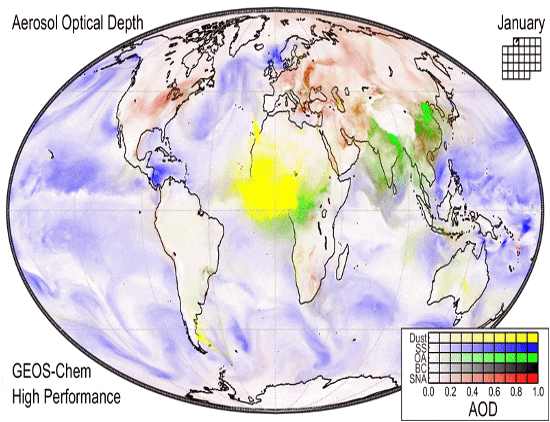
By the numbers: RIS resources utilized
- 2 PB active storage
- 2 PB of archive storage
- Access to the general compute resource pool (5,000 CPU cores and 160 GPUs)
- 61 CPU condo servers
- Consumed 69,377,364 CPU core hours from 267,854 jobs
Background: Characterizing air quality from global to local scales by gathering satellite remote sensing or other observational data and applying the GEOS-Chem model to simulate the atmosphere, interpret those observations, and understand processes that enable prediction.
Relevance: Driven strongly by the effects of air quality on human health.
- Fine particulate matter is a component of air pollution that is recognized as the leading environmental determinant of longevity with need to understand sources, distribution, and processes.
Objective: To understand the traditional sources and processes that affect the composition of the atmosphere, so the community can develop informed decisions on how to manage air quality for purposes of human health, climate, and other aspects of the environment.
Measured Success: Developing a global chemical transport model called GEOS-Chem.
- Comparing model simulations versus observations from satellite, aircraft, or ground measurements and, overall, the ability to reproduce a variety of measurements.
- Measured utilization of the open-source community model used by hundreds of research groups around the world.
- Cataloging the citations and publications to measure scientific impact.